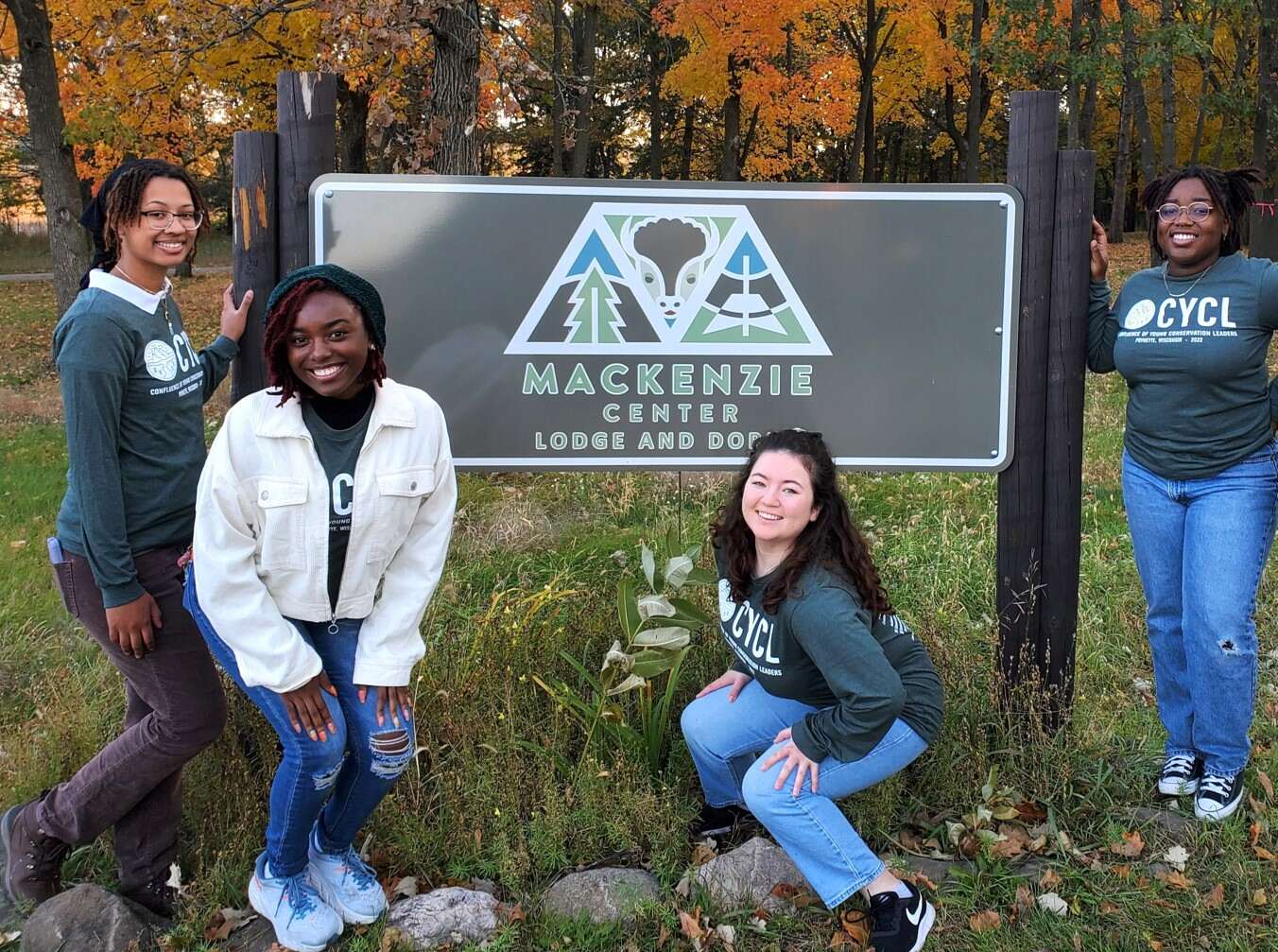This fall, LWF sent four students from the 2022 Conservation Leadership Corps to the Confluence of Young Conservation Leaders (CYCL). Afia Boaitey, Aaliyah Hameed, Nautica Jones, and Madelyn Helm had the opportunity to learn about ecological restoration, endangered species, and learn what other conservation organizations across the country are doing in their communities.
CYCL took place October 20-23, 2022, in Poynette, Wisconsin. Groups from Wisconsin, Missouri, Texas, and Louisiana participated in the program. The goal of the confluence is to provide students with the opportunity to learn from working professionals and experts in the conservation field, engage in networking opportunities and work on leadership development.
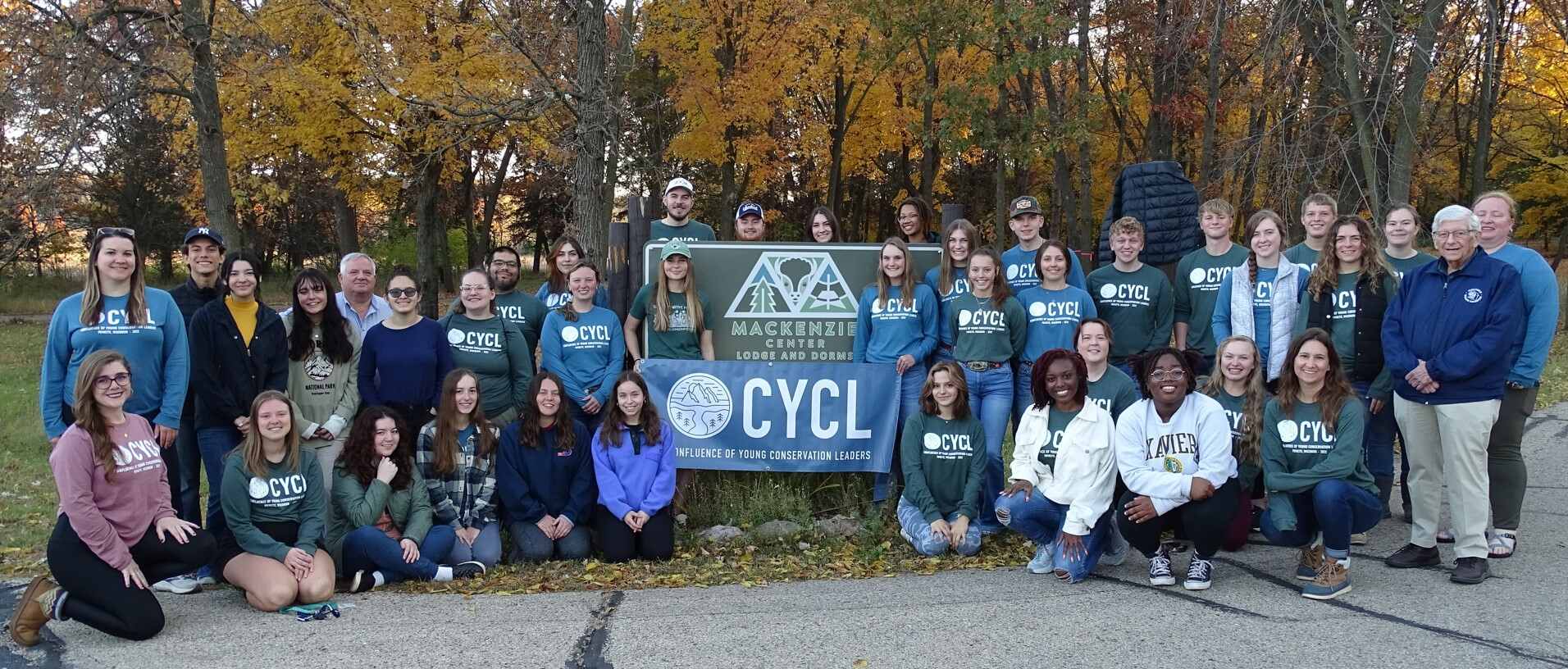
This year’s confluence was led and organized by Wisconsin Wildlife Federation. “This full spectrum of organizations and locations gave the young participants a rich scope of conservation and restoration career opportunities”, commented George Meyer, former executive director of Wisconsin Wildlife Federation.
The field tours involved in the CYCL included prominent conservation sites across Southern Wisconsin: The Aldo Leopold Foundation, The International Crane Foundation, Devil’s Lake State Park, the UW-Madison Arboretum and Three Waters Reserve.
The Aldo Leopold Foundation in Baraboo, WI is home to the land that inspired Aldo Leopold’s infamous A Sand County Almanac. It also inspired his vision for a “land ethic” – the moral responsibility man has to the natural world and the interconnectedness of the two.
Students got to tour the Leopold Center, an impressive facility that would surely have made Leopold proud. The Center received its green certification from the Leadership in Energy and Environmental Design (LEED) program, awarding the building 61 of 69 possible points in 2007 – more than any other building in the United States at the time. The Center states that “It was also the first building to be certified as “carbon neutral” by LEED, meaning its annual operations produce no net gain in carbon dioxide emissions. And it is a net zero energy building, meeting all of its energy needs on site.”
After a tour of the Center, students were led on a walking tour of the property, which is described by the Foundation as “a living classroom for exploring the ecological and ethical relationships between people, and the soil, water, plants, and animals that collectively make up ‘the land’.” A highlight of the trip was visiting Leopold’s historic shack, “a rebuilt chicken coop along the Wisconsin River where Aldo Leopold and his family stayed during weekend retreats”.
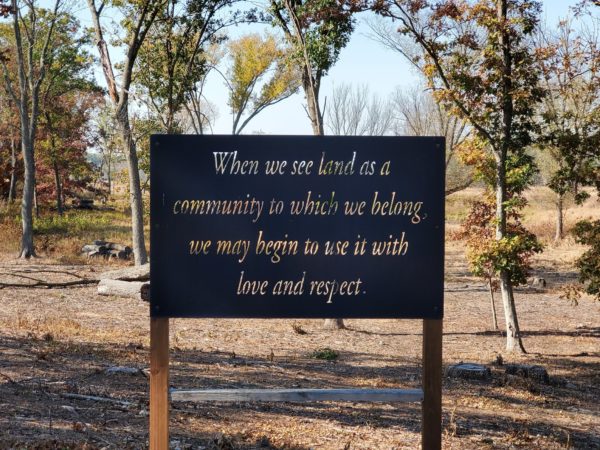
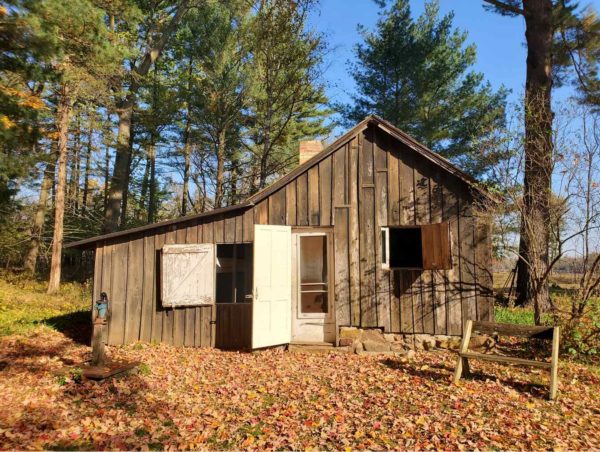
Next stop on the road trip was the International Crane Foundation (ICF). ICF works to conserve cranes and the ecosystems, watersheds and flyways on which they depend. The ICF headquarters hosts a captive flock of approximately 100 cranes, including the only complete collection of all 15 species in the world. Seven crane species are classified as Vulnerable. Four are classified as Endangered, including the whooping crane – the rarest crane species. Louisiana is lucky enough to host some of these rare birds (the only other species in Louisiana is the sandhill crane). ICF was a critical partner in the reintroduction of the whooping crane to Louisiana.

One of the guest speakers during the weekend was Access Ability Wisconsin (AAW), a fantastic organization working to provide the means to access outdoor recreational opportunities for people with temporary or permanent mobility challenges. Monica Spaeni gave a great presentation on the lack of accessibility to public lands and other outdoor spaces and how AAW is working diligently to fill that need by providing an outdoor wheelchair (OWC) & enclosed trailer to the public.
After being introduced to the OWC, Monica’s world was forever changed. She said of the experience: “It was like I was able to walk again. Just that relief of finally being able to be outdoors and go where I want to go; it was just this big, black cloud floating away and I could see sunshine.” Seeing the value of this device and the difference it could make for others as it made for her, Monica started AAW and has been increasing access to the outdoors for others ever since. “Everyone should have the right to public lands and access to the outdoors.”
Students got a chance to try out the OWCs at Devil’s Lake State Park. The equipment allows the user to access terrain that regular wheelchairs cannot navigate. As Spaeni put it: “Wheelchairs are like our shoes and outdoor wheelchairs are our hiking boots.”


While AAW is currently working to place at least one OWC with an enclosed trailer in each of the 72 Wisconsin counties, the organization’s long-term goals include expanding their reach by working with organizations throughout the nation. Their work is critical to increasing equity and inclusion for the outdoors; Louisiana would greatly benefit from programs like this. You can learn more about AAW at AccessAbilityWI.org.
The final day of the confluence included a stop to Three Waters Reserve (TWR), an ecological restoration site which includes an event center and nature reserve. Once home to a golf course, the center now sits on 57 acres of protected lands, restored to their original beauty and managed by the owner, Southern Wisconsin Land Conservancy.
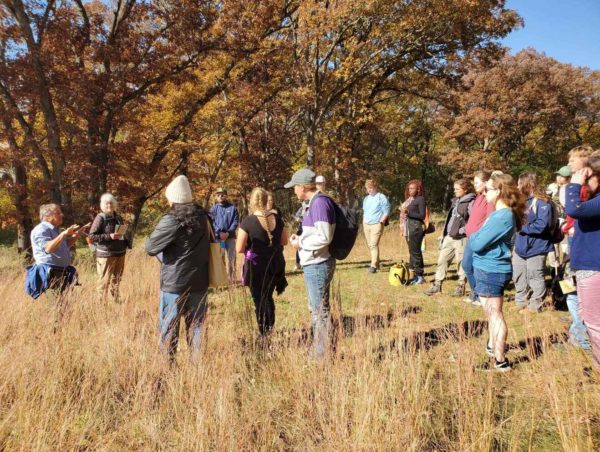
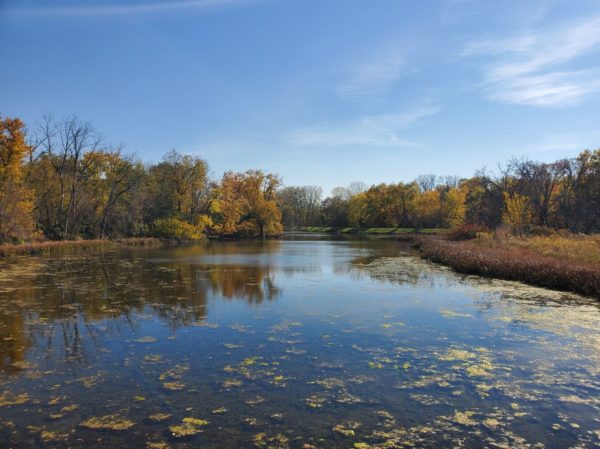
Southern Wisconsin Land Conservancy President (and ecologist), Steve Apfelbaum and ecologist Susan Lehnhardt shared their experiences in restoration, discussing the important role that stakeholders from both the non-profit and for-profit sectors play in restoring health to the land. Students were led on a walking tour of the property, where they were able to experience a unique blend of habitats ranging from wildflower prairie and river views to majestic oak savanna with century old trees. It serves as an important area for biodiversity, including several rare species of plants and wildlife.
The final stop of the “road trip” of Southern Wisconsin was the University of Wisconsin Arboretum, whose mission is to “conserve and restore Arboretum lands, advance restoration ecology, and foster the land ethic”. A tour of the Longenecker Horticultural Gardens offered a view of Wisconsin’s premier collection of hardy trees, shrubs and vines. The gardens are designed and maintained to display plant diversity and illustrate gardening practices.
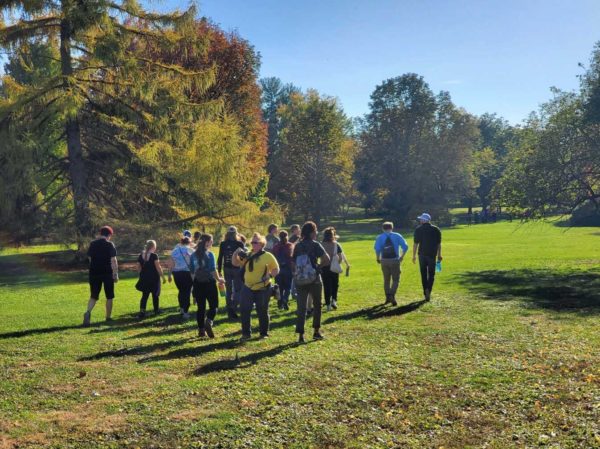
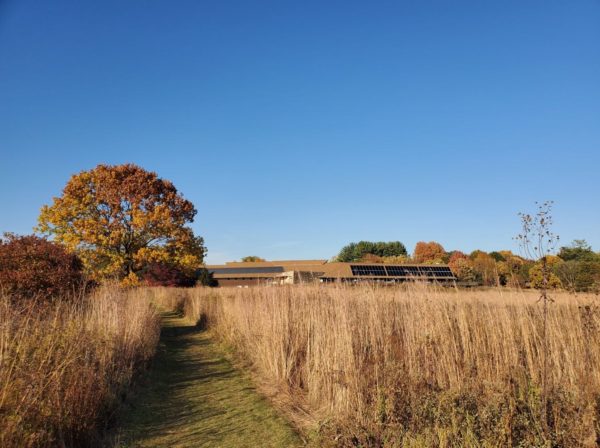
The Arboretum is known as the birthplace of ecological restoration. The “Arb” is said to be “home of the first restored prairie in the world and key in the origin of an entire field of academic research and land management”, according to the Arboretum’s Strategic Plan. “In his 1934 dedication speech, Aldo Leopold said the Arboretum would be a benchmark ‘in the long and laborious job of building a permanent and mutually beneficial relationship’ between people and the land.
Students got a tour of the Arboretum’s Wisconsin Native Plant Garden, which hosts 15 gardens and hundreds of native Wisconsin species. In addition to providing habitat for wildlife, the garden also serves as an outdoor classroom, allowing the public to participate in land care and learn about native plants, restoration, conservation, and ecological relationships. The garden promotes sustainable gardening practices including limited water use, minimal pesticide use, diversity in plantings, rain gardening, and pollinator conservation.
CYCL offered students an opportunity to not only learn about what other organizations are doing with their own conservation education programs, but also got several interactive sessions with speakers from the non-profit, for-profit and academic sectors.
Students got to see firsthand how some of these groups are contributing to conservation. It opened their eyes to just how diverse conservation leaders really are and how all play an important role in building a more sustainable world.
